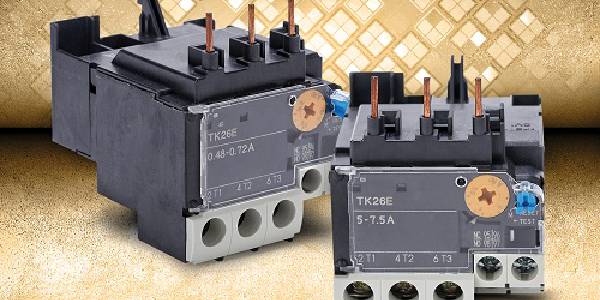
Thermal relay is an electrical component which is used in various electrical appliances. It is used for specific applications. The thermal relay works on a particular principle which one should be aware before knowing about its construction. It is used primarily in electrical fixtures to protect from overcurrent. Mostly thermal relays are installed in motors to avoid damage of motor due to power overload. Here you would know about the principle, construction, and applications of Thermal Relay.
Construction and Working of Thermal Relay
Basic Principle
The principle on which the thermal relay works is the thermal effect with electrical energy. Different element possesses a different coefficient of thermal expansion. Thus when two metals are heated together, then one with a higher coefficient of thermal expansion will expand more than that of the other metal. This is the basic principle used with a thermal relay.
Construction And Working
The essential parts of the thermal relay required for its construction are bimetallic strips, heating coils, and current transformers. The current transformer serves as a source of electrical supply to the heating coils which generate thermal energy. This would, in turn, heat bimetallic strips. Nickel and steel alloys are used to create the bimetallic strips. These alloys are steel resistive, and it prevents from thermal aging.
The construction of the thermal relay simple; thus it is used in motors and other devices for preventing it from overload. You need a bimetallic strip of two different metals each with different coefficient of expansion. Consider metal A with a lower coefficient of thermal expansion and metal B with a high coefficient of expansion. Thus metal B would expand more when it gets heated, and the metallic strip would bend towards the metal A. Thus the No contact is closed, and ultimately the circuit breaker works as the trip coil gets energized.The heating effect created is not instantaneous, and it is based on Joule’s law of heating.
H the amount of heat is proportional to the square of current and resistance concerning time. Thus there would be a prolonged time delay for the operation of thermal lag. This type of relay is used in devices where the overload is allowed for a particular period. If the current falls in between the normal value, the relay would be not be operated. The main application of thermal relay is the protection of an electric motor from overload.
The overload relay is installed in the motor in places where temperature varies. The overload trip point would change based on the temperature of the surrounding. This would result in premature tripping. Special overload relays called as ambient compensated bimetal overload relays are used to combat this issue.
The overload relay is generally used on an inverse time curve where the tripping time becomes less when the current flow increases. They are measured based on trip class. It is nothing but the length of time it takes for the relay to open when an overload occurs. Some of the common trip classes are class 5,10,20,30. Class 5 is used for motors.
The above offers a detailed overview of thermal relays.
Read More : Guide to Understanding Switching Systems

Leave a Reply